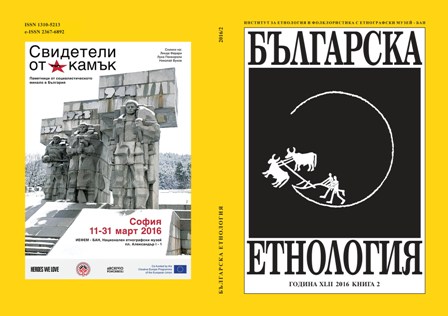
We kindly inform you that, as long as the subject affiliation of our 300.000+ articles is in progress, you might get unsufficient or no results on your third level or second level search. In this case, please broaden your search criteria.

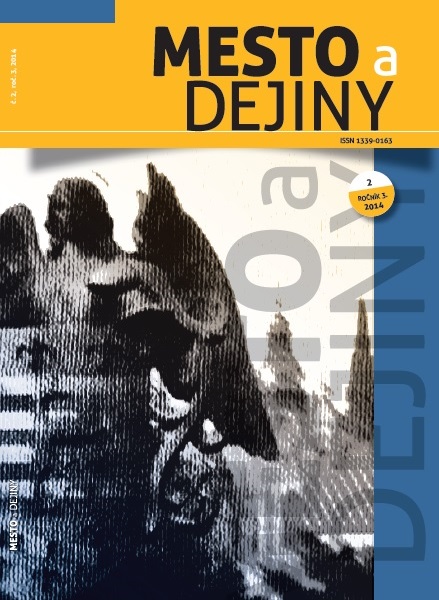
After World War I, the debate on Belgian reconstruction divided architects. Some claimed that the priority should be the reconstruction of monuments and urban historical centers, others considered the construction of housing more urgent. In the first half of the Twenties, on one hand the well established generation of old architects worked at reconstruction of devastated regions, on the other hand the young „modernist“ generation experimented with the construction of garden-suburbs with low-cost housing. The urban planner and landscaper Louis van der Swaelmen and the modernist architect Victor Bourgeois considered a failure the reconstruction „à l’identique“ and the reconstruction „in style“ that exhibited a sentimentalist and regionalist vision. Indeed, the law on destroyed municipalities (April 8th, 1919) imposed a regional esthetic for reconstruction on pre-existing urbanized sites. By contrast the construction of new garden-suburbs appeared as a great success against the „vieux-neuf“. In 1920 the Office of Devastated Regions opened the „Architectural Section“ under the responsibility of Jean-Jules Eggericx, and a first settlement of 100 social housing units was created a Roulers and named Batavia. It was inspired, at the same time, by the Belgian beguinage and by the English garden-city; and new materials and building technologies were experimented there.
More...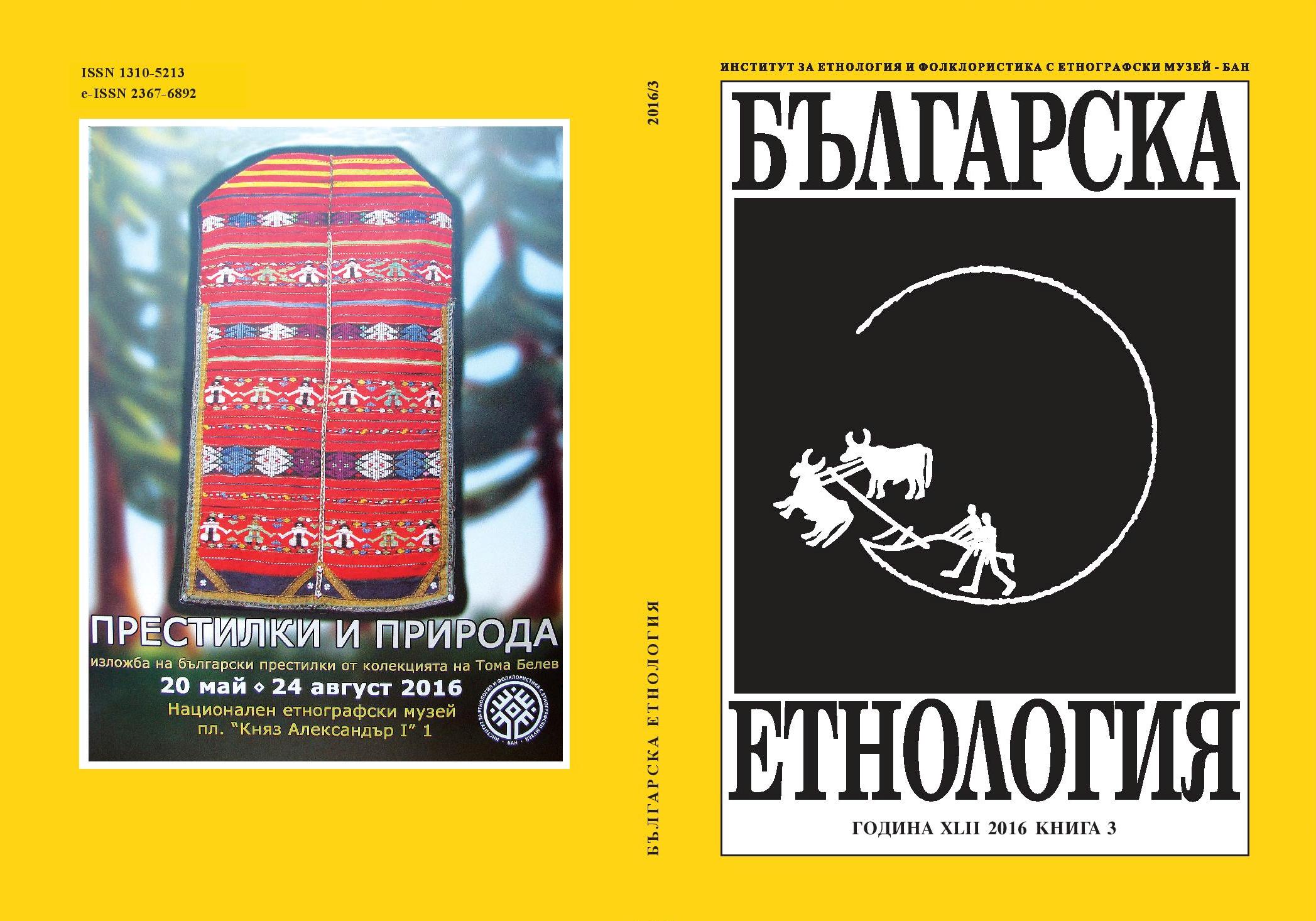
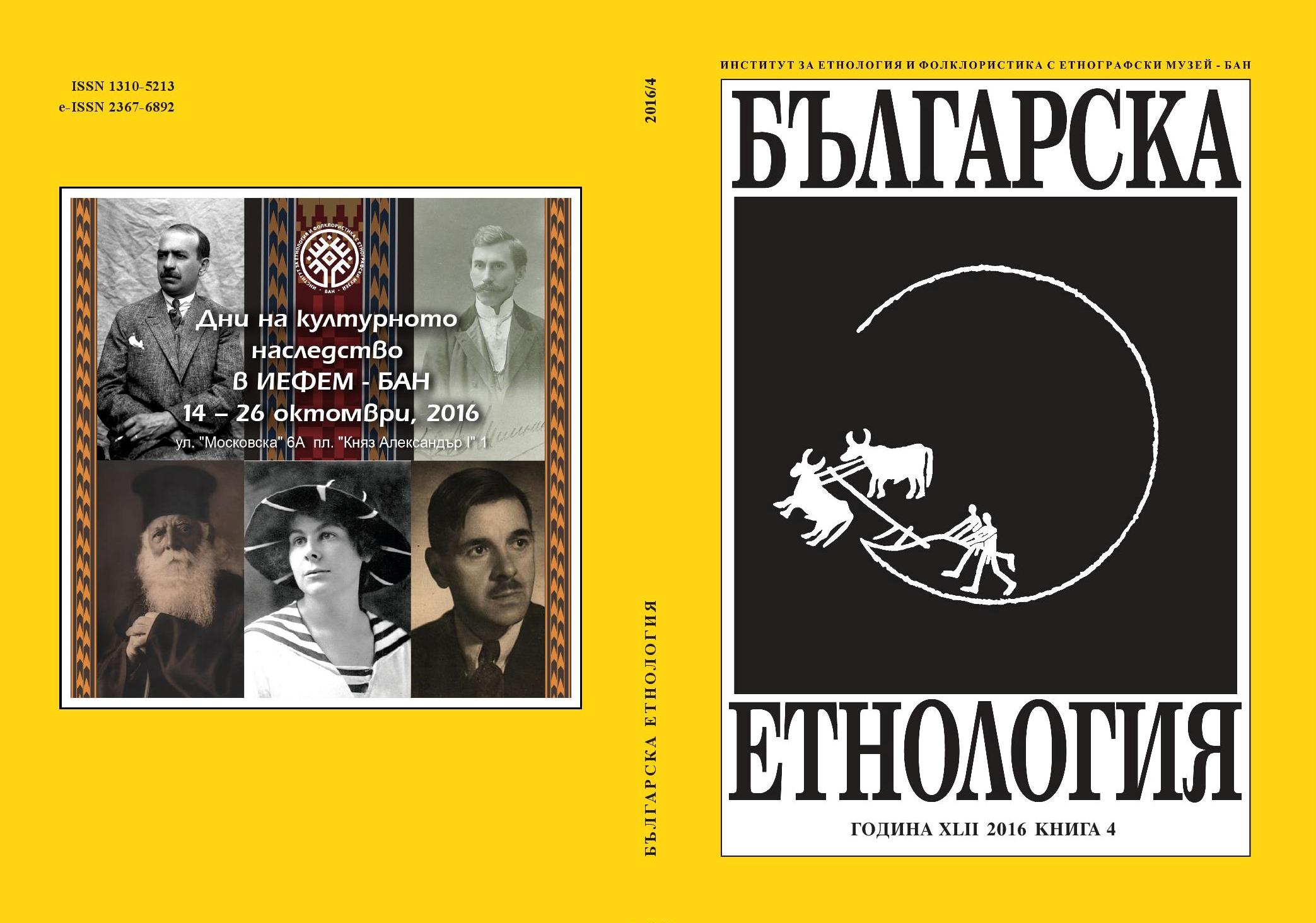

One of the typical and relatively stable features of the everyday life of the Bulgarianimmigrants in the historical and cultural region of Bessarabia are the patronal festivalsand customs held within the frameworks of the village, neighbourhood or familyand referred to as zbor/sabor (збор/събор), hram (храм), kurban (курбан), tsarkva(църква), panagir (панагирь), cherkuvane (черкуване), moleben (молебен) etc. Asfor the designation збор (a fair), it is clear that it precedes the Russian designationхрам (a patron saint’s day) which penetrates the region under study later on andwhich is widely used at present. What stirs up bigger interest is the fact that exceptfor village church festivals this term (as well as some of the other above-mentioned) was also used for intervillage festivals held at the landmark of the territories of two,three or more villages – the so-called fairs at the landmark also known as moleben orcherkuvane for rain and good health.As far as the patron saint’s day is a universal Christian phenomenon and stilla general practice in the villages of the region studied here, it could be assumedthat the gathering itself, the making of zbor (or moleben) at the landmark (at theborder between a group of villages), which is neglected today almost everywhere,is a form typical only of the immigrants (Bulgarians and Gagauzians) in Bessarabia.This practice attracts the attention with respect to its nature and development as partof the all-Bulgarian system of patronal village festivals as well as with relation tothe influences, changes and specifics through which it inevitably goes under theconditions of the many-tounged and polycultural environment of Bessarabia and theRussian Orthodox Christianity.The fieldwork materials collected so far do not allow a coprehensive and thickdescription of the phenomena intriguing us as well as a more elaborate analysis.That’s why the article only poses the problem or rather interpretes it in connectionwith some concepts of the kin and family-territorial patronal festivals and customswhich were formulated a long time ago in the Bulgarian science but which are stillrelevant.
More...
On the basis of written sources and field materials, the article examines the phenomenonof the “Odessa cuisine” as a regional complex of food. In the context of thehistorical dynamics, it shows the role of the Balkan traditions in the formation anddevelopment of the everyday culture of the inhabitants of Odessa. Special attentionis paid to the current state of the trade subculture and, respectively, to the systemof the food traditions in Odessa. In particular, the article shows that there are manyproducts introduced by natives from the Balkans (first of all, Greeks and Bulgarians):eggplants, tomatoes, cheese, corn, mutton, grapes, etc. The regional dishes perceivedas “Odessaian” but having roots in the ethno-cultures of the above-mentioned communities,are developed on this basis. The text shows also the “blue” (eggplants) invarious variations of preparation and the “pshonka” (corn). Beside the national, theprofessional mass cuisine is also analyzed (restaurant); in it the Balkan substratumhas found its place a long time ago along with the Jewish, Ukrainian and Moldavian.In the menu of these institutions, there are surely a number of dishes with Balkanorigins. On the other hand, it is worth characterizing the special national restaurantsof Odessa (Bulgarian, Gagauzian, Greek).
More...
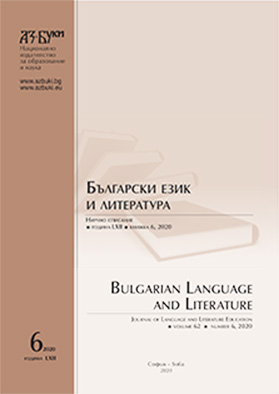
This article aims to explore the manifestations of horror in Czech and Bulgarian folk tales. Various demonic characters, which are typical of Czech and Bulgarian folklore are compared, аnd the focus being placed on man’s encounter with the supernatural being and the fearful situation that it gives rise to. The function of the scary character in these plots is predominantly harmful and is built on the conflict between man and demon. The presence of the scary is universal and has its own peculiarities in the various folklore genres, and in fairy tales we can highlight the following functions: entertaining, ethical, pedagogical (didactic), therapeutic and cognitive.
More...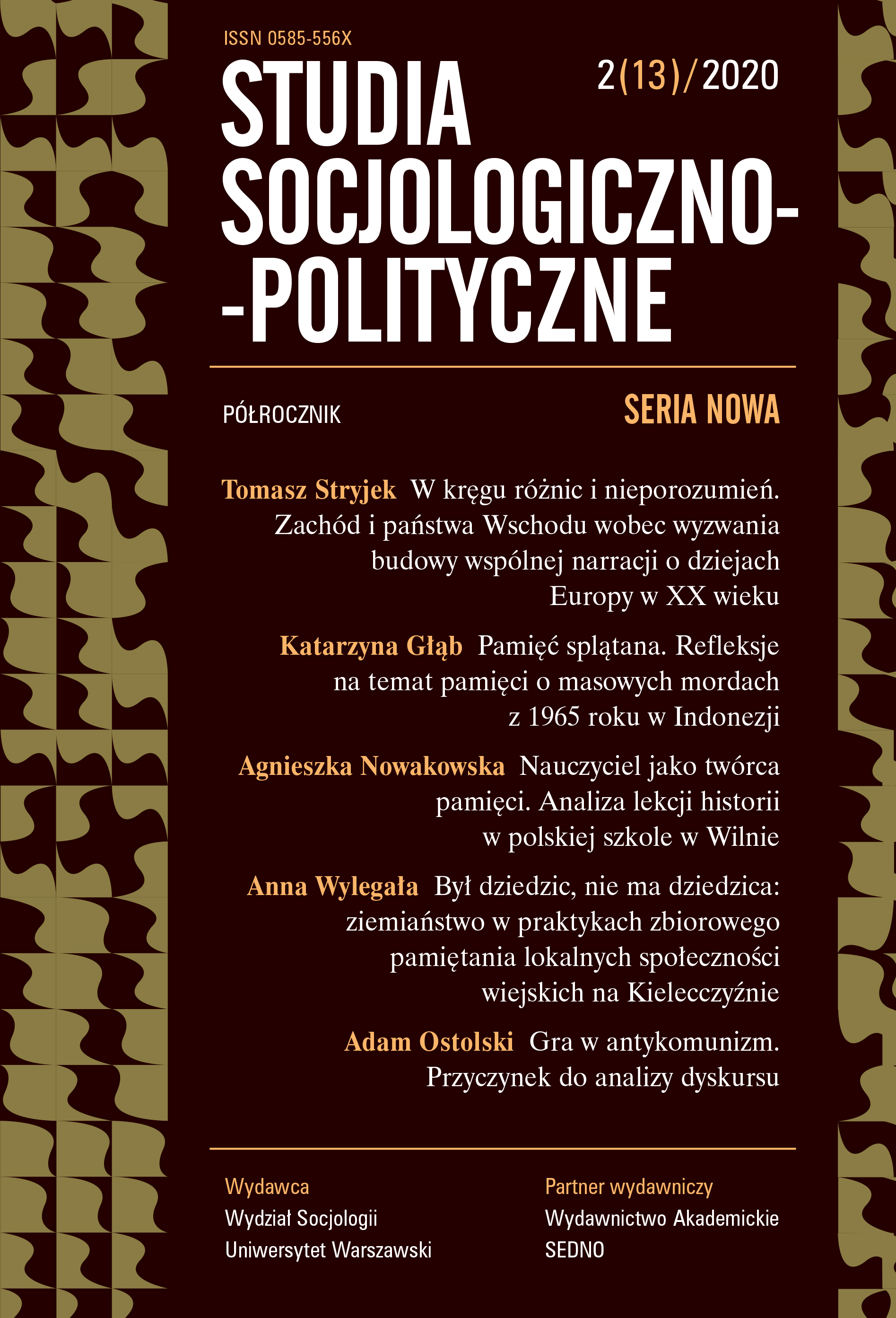
This paper focuses on one specific aspect of the Polish collective memory, namely – on the memory of the landed gentry and their expropriation from the Polish countryside conducted by the communist government in 1944. The communists expropriated the gentry, gave most of the land to the peasants and irreversibly changed social and economic structure of the Polish countryside. The paper analyzes how the very fact of the gentry’s historical presence and later expropriation is represented in the collective memory of the local village communities, and how it is used in the creation of the local memory scope and historical identity. The theoretical focus is on the acts of collective remembrance as understood in the work of Jay Winter, and then on the public aspect of the collective memory. Grounded in extensive fieldwork, this paper focuses on the case study of two villages which give examples of particularly active commemorative practices connected with the symbolic legacy of the expropriated landowners.
More...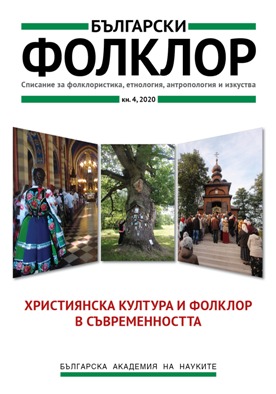
Anthony is a highly honoured saint, considered to be a patron and a defender of various diseases. The church “St. Anthony” in the smallest town in Bulgaria – Melnik – is known exactly for its healing aspect and can be identified as one of the most sacred cult sites in the surroundings, connected with numerous stories of miracles, healings, interesting and rare ritual practices. The modern state and functioning of the church is a complex of different components that build the role and importance of the cult site as a very attractive place for pilgrimage and healing. Besides of the cult of the patron itself, these components include also various miraculous objects, iconographic features, the location of the church, and characteristic stories of miracles, media, and personal representations and interpretations. In this article, I will examine the cult of St. Anthony in the city and church dedicated to him through the prism of two basic elements – miraculous objects or other ones in the church area and beliefs and ritual practices related to them. It is precisely the connection between the different components of the cult site, combining diverse objects of pilgrimage, honoring, and usage, that creates a truly unique context in which this church, the only one in the country until recently dedicated to the St. Anthony, exists. The analysis is based on observations from conducted fieldwork studies in Melnik and bibliographic and online surveys in the period 2016–2018.
More...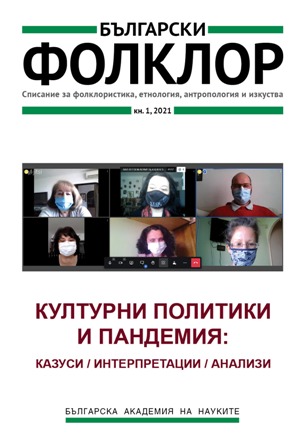
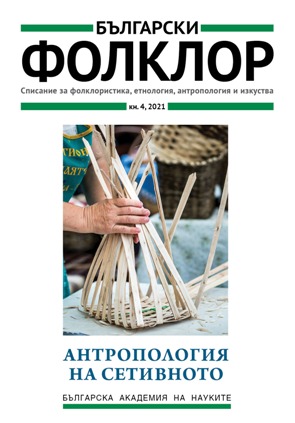
The article discusses notions referring to the ruler and his body according to the pagan views of the Bulgarians in the epoch before Christianity was adopted in the Bulgarian lands. Drawing on written sources and material evidence, an attempt is made to interpret ideas, signs and objects which form the system of the ruler’s ideology. Typological similarities are pointed out between the ruler’s ideology of the Bulgarians and that of the peoples of the Eurasian Steppes, Central Asia, and with other peoples from the Migration period.
More...
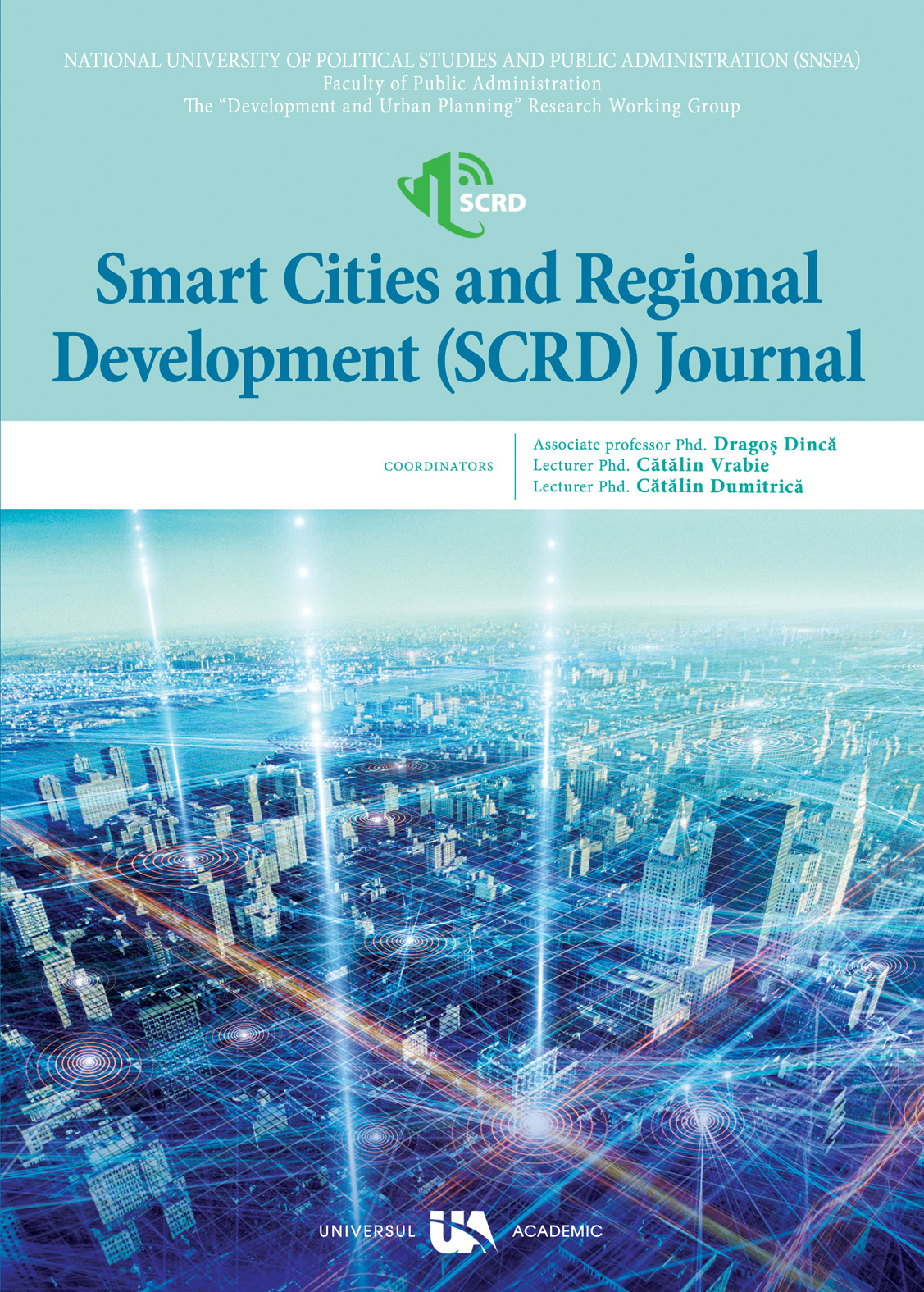
The paper analyzes the main aspects of ambient advertising, metaverse and smart cities. This type of advertising is creative, relatively inexpensive and uses the context of a city’s area to provide a new experience to its residents and tourists. The article aims at displaying the overlapping of this marketing communication with the urban context and how both companies and municipalities could benefit from using it. The types of ambient advertising are studied, as well as their application in the communication of organizations with people in cities. Through content analysis and case studies the connection between ambient advertising and metaverse urban areas with its residents is studied. This paper adds on several previous studies [1, 2, 3] and some others in the context of smart cities and metaverse ambient advertising, while proposing an additional method of tracking user experience – eye tracking. Key elements of ambient advertising, the metaverse and smart cities are studied, as well as interactivity and connectivity. Through the analyzed examples the positive aspect of using this marketing communication is displayed, since it makes it possible for the residents to see the same environment in a new and interactive way. Thus, the connection between them and the urban space becomes stronger and more entertaining. This paper could be of interest to academicians and practitioners in the sphere of marketing and advertising, as well as representatives of municipalities, who aim at providing their residents an additional level of experience with the urban areas of the future.
More...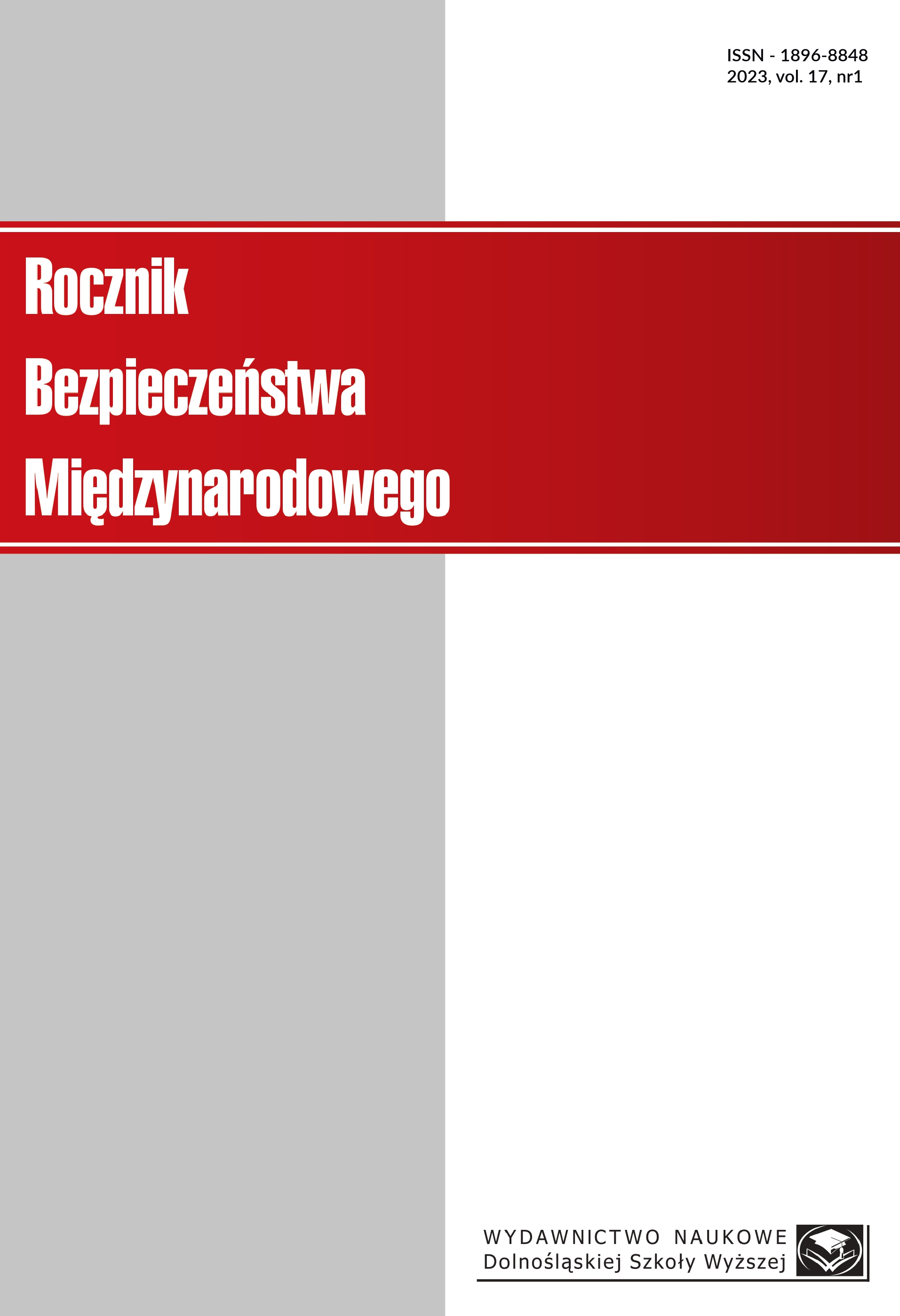
On the 6th of February, 2023, a strong earthquake struck south-eastern Turkey and north Syria. A number of international search and rescue teams went to the affected region. Against the background of these events, the author discusses the most important aspects of the operation of the international civil protection systems, focusing on those directly related to the deployment of rescue teams to the earthquake-affected region. In addition, the key stages of rescue operations carried out by a group from Poland (HUSAR Poland) are discussed, with references to theoretical issues of organising the work of the teams and assisting those who were affected. The article demonstrates the activities of international aid systems and provides statistics of victims extracted by search and rescue teams. It proved their effectiveness in saving lives.
More...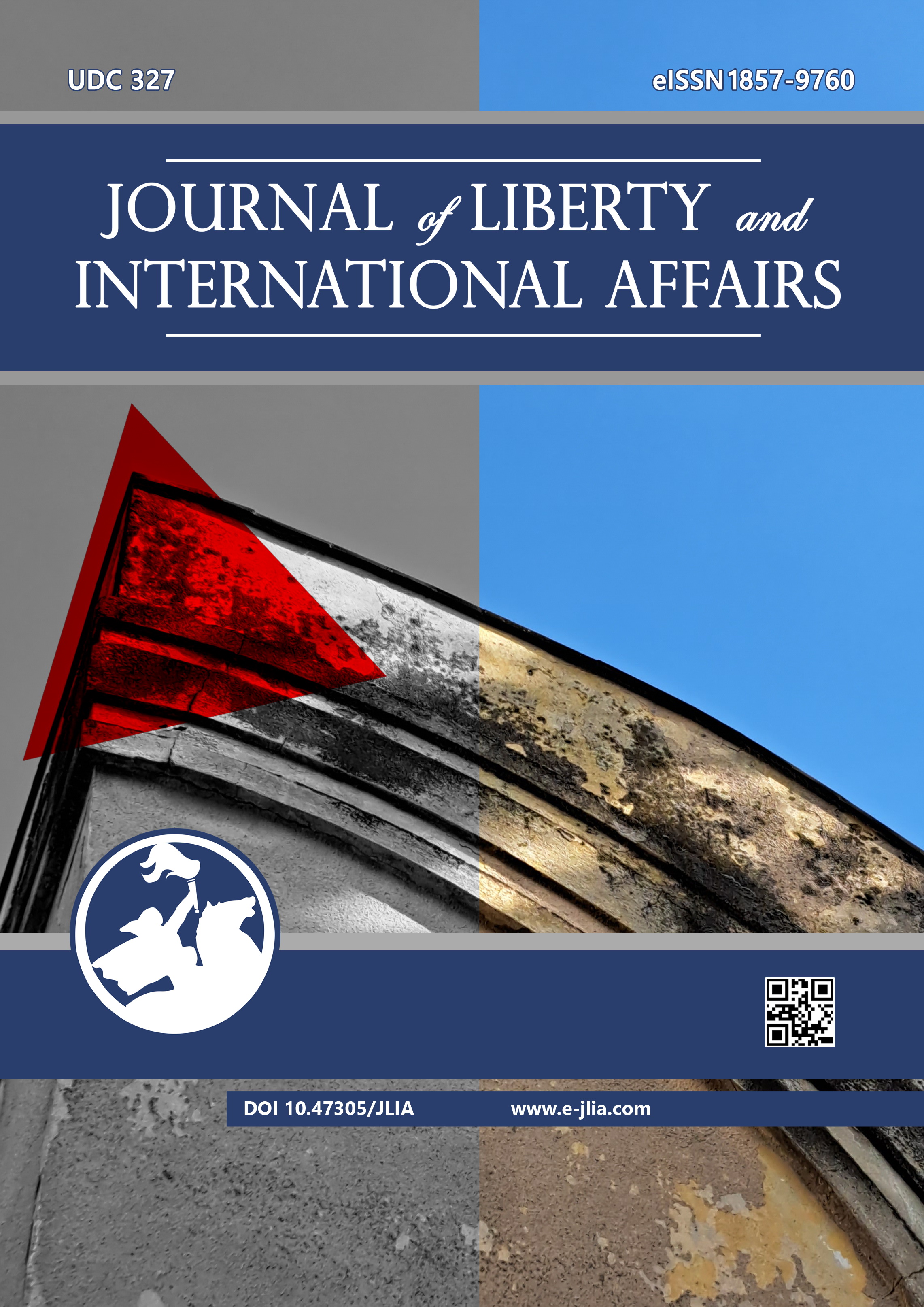
Territorial development disparities are an undeniable reality for all the countries of the world, which implies that no country can practically avoid them. However, how different countries respond to these disparities is another matter. The effectiveness of policies in overcoming territorial development disparities depends significantly on how deeply these disparities are recognized and studied. In this context, assessing disparities in territorial development is necessary, and the article proposes a methodology for its implementation. The methodology examines territorial development indexes and their relative standard deviation. In the article, the developed methodology was also applied to 10 countries, as a result of which the levels of territorial development disparities in Canada, Poland, Bulgaria, Hungary, Finland, Serbia, Georgia, Moldova, Kazakhstan, and China were evaluated. Based on the assessments, general conclusions are also presented for each country in the article.
More...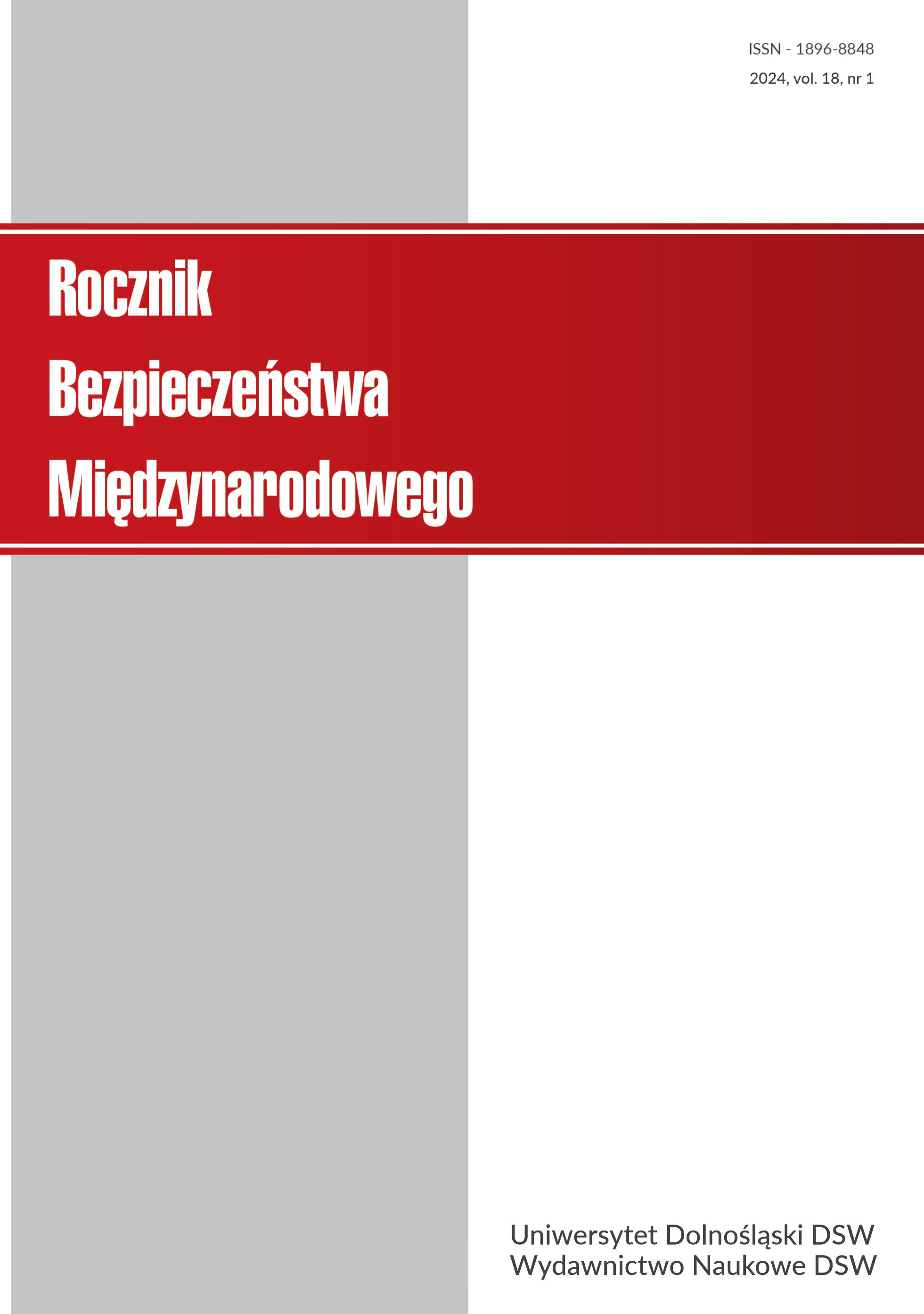
Given the instability of the global economic system caused by natural disasters, financial crises, pandemics, and armed conflicts, the realization of sustainable development as a global strategy is increasingly challenging. The exacerbation of global problems facing humanity – and Russia’s large-scale invasion of Ukraine – further worsen the issue of international security in general. There is a need to find effective approaches to the implementation of international relations in current conditions that would guarantee sustainable development and international security. This article examines the theoretical and conceptual foundations of sustainable development diplomacy based on a literature review. It tests the hypothesis about the ability of sustainable development diplomacy to be an effective and efficient tool in current conditions for ensuring sustainable development and international security using the hypothetical and deductive method. The compliance of sustainable development diplomacy, with the fundamental principles of sustainable development, is investigated through an analysis of definitions, determining whether the state’s foreign policy is aimed at sustainable development and whether sustainable development is achieved exclusively through peaceful means, as well as identifying the defined role of sustainable development diplomacy in ensuring international security. Additionally, the article explores the relationship between sustainable development and international security through an interdisciplinary analysis and the method of induction. The regulatory tools for sustainabledevelopment diplomacy in the context of international security were improved through theapplication of the integration method.
More...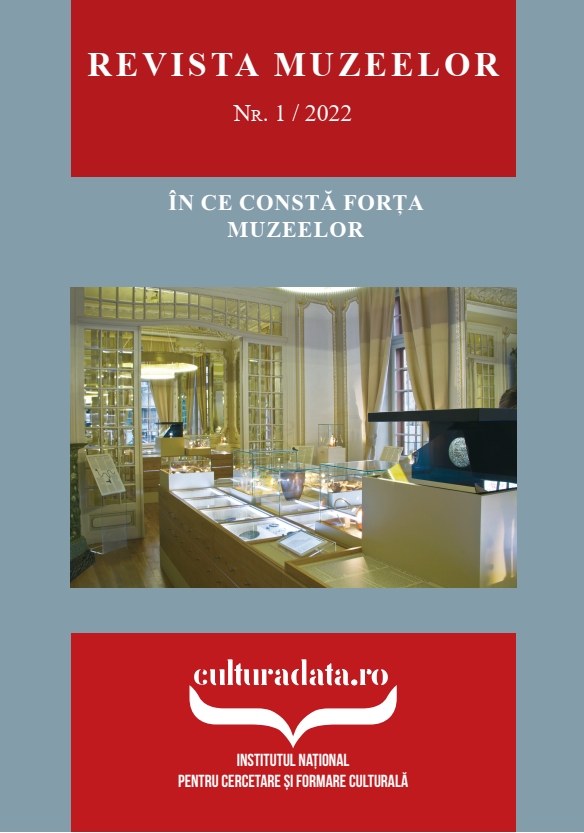
The subject of this paper is still not enough explored, not only from the perspective of museum research but also from that of studies belonging to other fields that take into account the need to integrate culture in urban regeneration. Because this topic is current and relevant for the multitude of cultural and social forms in which the museum institution could become a lasting pillar, we believe that our attempt will allow us to sketch an integrative project from which to extract some useful considerations for future research. The conclusions that emerge from positioning the National Museum of Romanian Literature in Bucharest (MNLR), more precisely its cultural hub located in a disadvantaged area, in the epicenter of urban regeneration through culture of the adjacent area, will hopefully be compelling enough to support a cultural axis. Especially since the targeted area (although it has a rich local cultural heritage, which deserves to be capitalized and whose historical memory must be preserved) does not yet experience the long-awaited revival, MNLR - as already demonstrated - can become a crucial actor, together with partners from civil society, in drawing a new cultural axis in the Romanian capital. This could contribute to the transformation of a physically degraded area with precarious living conditions into an engine for integrating culture into the daily concerns of as many fellow citizens as possible, and not only those belonging to the local community. After all, any attempt to achieve a prospective approach focused on the museum institution only validates the generous and mobilizing slogan of ICOM: “Museums have no borders, they have a network”.
More...
